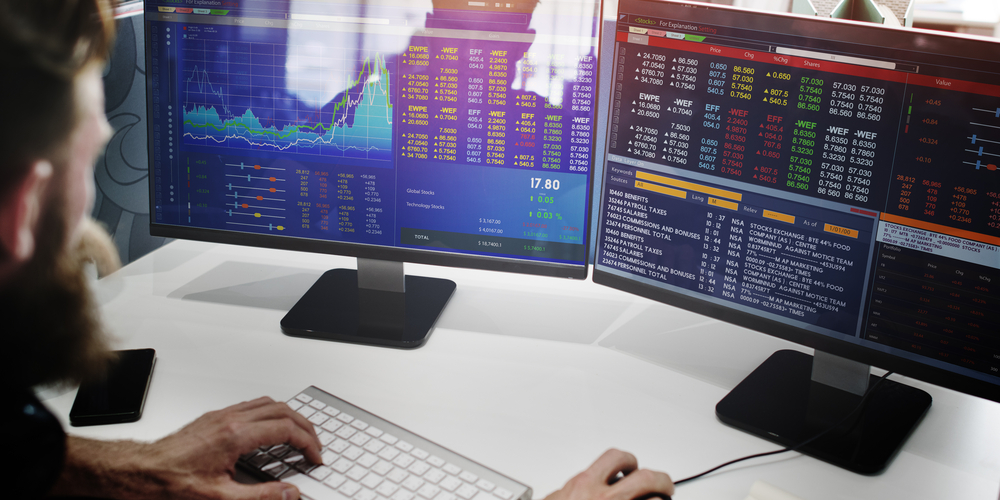The act of buying and selling securities within a very short time to mislead other traders regarding the liquidity or price of those securities is called wash trading. While wash trading had been effectively banned in the securities market, the crypto market had yet to catch up with the regulations, and wash trading is still a common practice on crypto exchanges.
This guide discusses the basics of wash trading, how it works, and how you can avoid getting stuck in wash trading on any platform.
Understanding Wash Trading
Wash trading is simply an activity in which a trader buys and sells an asset at almost the same time. Since wash trading can change the value and trading activity of an asset, it can be used to manipulate the market.
Many investors and big companies have their reasons for wash trades. Mainly, these trades are made in an attempt to increase the market activity of an asset and to attract new investors. This helps increase the price of an asset in a short period. Wash trades can also be used to halt the trading activity of an asset and to decrease its market value.
Some people and companies do wash trading to buy assets at a high value and then sell them immediately for a lower price to register a net loss in the trade. This allows the trader to show a loss on their trading portfolio and makes them eligible for a tax rebate.
There might be various traders, tools, and motivators behind wash trades, but the end goal is usually the same. The key intention is always to boost the trading activity of an asset and to misguide traders about the market activity and true value of the asset involved in wash trading.
What are Wash Trading Conditions?
For a trade to be classified as a wash trade, it must meet two compulsory conditions.
One of the conditions is the ill intention of the wash trader. The wash trader spends some time making a good wash trading strategy and their entry/ exit price before executing the trade. Since wash trading from a single account is easily detectable, wash traders have to use multiple trading accounts with the same ill intention of misleading other traders.
Whenever the wash trader has to execute their plan, they start using multiple trading accounts to place trades. This begins changing the price of an asset (given that the wash trade is significant) as more orders get placed.
This activity also starts changing the trading volume of the asset being wash traded. After buying the asset at a specific price, the trader will then sell that asset to another account which is also being controlled by them.
The second and more concerning condition is the result of the wash trade. The trade must be executed by the trader in a short period (almost instantly), and the assets must only be traded between the accounts of the same wash trader.
To detect a wash trader, the overall financial condition of their investment account needs to be analyzed. If the investor is standing in the same position after making one or multiple trades, their trades can be labelled as wash trades. There’s no market risk involved in wash trading either.
Example of Wash Trading
Let’s say a trader, along with a broker, decides to rapidly buy and sell the stocks of an XYZ company; they’ll increase the market activity of the XYZ company’s stock with their rapid wash trades. This way, other investors will detect the buying and selling activity and will quickly start buying the XYZ stock.
Once the XYZ stock gets attention and investment from misguided investors/ traders, its value will increase. Upon the value increase, Ben and the broker can then short-sell the XYZ stock to exit their trade and end up with a profit derived from their wash trading activity.
When Ben and his broker exit their trade, the market will start going down, and the misguided investors will incur a net loss on their trades.
Let’s now come to the world of cryptocurrencies. Because of the anonymous and immutable nature of the cryptocurrency market, it can be way harder for relevant authorities to introduce the necessary regulations. This is why wash trading is still widely used in the crypto marketplace.
At its peak (around 2017-2020), most of the projects in the blockchain market used to raise funds through ICOs. Due to the lack of regulation, the funds collected from initial coin offerings were used by some projects to show a fake hike in their project’s market activity, and this helped them drive up the value of their blockchain project without any constraints.
In the case of cryptocurrency, investors/ founders of a project can easily buy and sell their asset against any cryptocurrency continuously to drive up the market activity of their asset and to attract/ misguide many investors.
Crypto wash trading, just like its counterpart in the securities market, is also done by using multiple accounts by the same investor/ group of investors. Although the crypto market is famously transparent, using multiple accounts helps crypto wash traders disguise themselves and their intentions easily.
Once the trading volume of a blockchain project is hiked because of the wash trades, lots of misguided investors start taking an interest in the project and adding it to their portfolio by investing in it. By this time, increased interest and investments from multiple investors caused a gradual increase in the value and market cap of the project.
The wash trader can now sell their cryptocurrency assets for a profit. This is how wash traders use cryptocurrency markets to invest and make profits through the illegal activity of wash trading. Wash trading works just like pump and dump schemes.
How Does Wash Trading Differ from Market Making?
At a glance, wash trading might look exactly like market making.
Market Making involves a trader buying and selling the same cryptocurrency on multiple exchanges with the price difference of that cryptocurrency. The market maker doesn’t send and receive cryptocurrency in their wallets but rather provides liquidity to the market by making that cryptocurrency easily available for traders to buy and make trades.
For example, a market maker places a sell order for their BTC for $20,100/ BTC on one exchange. As soon as a buyer/ trader buys one Bitcoin from the market maker, they can use that capital to place a buy order on another exchange that sells 1 BTC for $20,000.
his way, while the market maker’s account might look flat, they’ve benefitted from the difference in the selling/ buying price of Bitcoin across multiple crypto exchanges.
As far as the key difference between market making and wash trading is concerned, it is the intent of the trader executing the trades. By taking part in market making, traders make cryptocurrencies highly liquid and readily available for trade on every cryptocurrency exchange.
Market maker always sells to and buys from random investors. This makes cryptocurrency easily available for anyone who might be looking to place trades or invest in a cryptocurrency in the long run.
On the contrary, wash trading involves the use of a limited number of accounts for the whole trading activity. You’ll often find a single wash trader or a common group of wash traders behind all the wash trading activity.
Since wash trades are executed immediately without even allowing the market to change, the only purpose of wash trades is to mislead other investors about the trading activity of a crypto asset.
NFTs and Wash Trading
After affecting the securities and the cryptocurrency markets, wash trading has now become commonplace in the NFT marketplace. Various NFTs have recently come under scrutiny for the wash trading activity related to them.
Before diving into the concept of NFT wash trading, let’s first see how NFTs work and what makes them so unique and valuable.
NFTs or Non-Fungible Tokens can be used for several different purposes. Understanding the concept behind fungible tokens can make understanding NFTs a lot simpler for you.
A fungible token can be traded for another fungible token of the same type. Fiat currency is the biggest example of fungible tokens. You can trade a $1 bill for another $1 bill with someone; both of you will still have the same value.
The concept of the same value doesn’t work with NFTs because each one of them has its unique value. For example, every plot of real estate is unique in itself, and that is why real estate is not fungible.
Just like two houses, even if located in the same neighbourhood, cannot have equal value, NFTs cannot have equal value either, and there are always various factors behind it.
It is not possible to trade one NFT for another NFT, as both of them will differ in value.
In the cryptocurrency market, NFTs are unique assets that hold different values, and the name of their owner is always saved alongside the NFTs themselves on the blockchain.
Since NFTs are increasing in value, they are becoming more popular, and the global NFT industry has attracted many investors lately.
Because of the ever-increasing number of NFTs available in the market to buy, NFT creators are always discovering ways to make their NFTs stand out.
By making their NFTs unique, they can sell them for more money, since the uniqueness and rarity of an NFT are what drive its market value up. This is the key motivator behind the introduction of wash trading in the NFT marketplace.
NFT creators can use wash trading to artificially inflate the market activity of their NFT and to drive its price up. A wash trader can easily set buying and selling prices while executing multiple buy and sell orders for the same NFT.
They have to use different accounts to show their wash trades as legitimate market activity. By repeating wash trades for some time, the wash trader can increase the value of their NFT significantly and also show increased interest in the NFT.
This misguides other investors about their NFT, and someone ends up buying the wash-traded NFT for much more than its actual worth. This makes the NFT creators a handsome profit if done right.
A recent investigation into 110 active NFT traders has shown that those accounts alone bagged around $9 million in profits, all by using wash trades.
Is Wash Trading Illegal?
The straightforward answer to the questions regarding the legality of wash trading is, No. Wash trades, because of the ill-intentions of the investors involved and because of their negative impacts on the market, are completely banned from the securities market.
Before it was defined as illegal, wash trades were used by many investors to artificially inflate the volume and value of an asset to way above its natural indicators. This trading strategy was used to manipulate the whole securities market on a global scale.
CFTC, or Commodity Futures Trading Commission, has also introduced regulations that prevent brokers from making a profit with the help of wash trading. The IRS has also instructed investors not to use wash trades to show net losses in their trades, as this strategy is often used to get tax rebates.
Wash trades are actively traced by the authorities in the securities market, and wash traders are often faced with legal charges.
Although the regulations in the securities market have decreased the number of wash trades significantly, the cryptocurrency market is yet to catch up. The SEC is also considering introducing regulations for the crypto market.
However, since NFTs are non-fungible, they can’t be classified as securities and don’t fall under the SEC’s jurisdiction. So, NFTs might be exempted from any future regulations by the SEC.
Also, cryptocurrency is still legally considered property by the IRS and is still not added to the list of securities.
So, until the regulators decide whose jurisdiction the crypto and NFT marketplaces fall under, there’ll be no solid steps taken to stop wash trading. Without any regulations in place, wash traders will continue to manipulate the crypto and NFT market.
Wash Trades and How to Avoid Them
Most of the time, wash traders choose small markets rather than large markets. That’s because smaller markets can be easily impacted with a limited number of wash trades.
Wash traders with huge portfolios can easily make a significant amount of wash trades in any cryptocurrency with a small market cap.
Once a wash trader starts buying and selling a cryptocurrency repeatedly, more investors will get attracted to the artificially inflated market trading volume of that cryptocurrency, and this will drive more investments to ultimately increase the value of that cryptocurrency.
A newly launched cryptocurrency doesn’t have much trading volume to show in the market. This motivates the developers of that cryptocurrency and big whales to start wash trading to significantly increase the market volume of that coin to attract more investors.
The same is the case with newly made NFTs as well. Since they don’t have any interest or value attached to them initially, NFT owners can indulge in wash trading to inflate the price of their NFT and possibly sell it for a much higher price by misleading interested investors.
To easily avoid getting trapped in wash trades, investors should always stay away from newly launched cryptocurrencies and NFTs, and also from the ones with very little market cap.
To avoid losses because of getting stuck in wash trades, investors should always invest in more established cryptocurrencies and NFTs, which have proof of performing well in the past.
The large market cap of an established cryptocurrency will require the wash trader to use a huge sum of money to manipulate the market. For example, wash trading is almost impossible in the case of Ethereum and Bitcoin.
That is because the market capitalization of these cryptocurrencies has crossed hundreds of billions of dollars, which makes it practically impossible for even the biggest whales to manipulate their market.
Conclusion
Wash trading involves the ill intention of a trader to mislead other traders about the volume of an asset. This helps the wash trader make handsome profits on their investment in the wash-traded asset.
Although wash trading is effectively banned in the securities market, the lack of regulation in the crypto and NFTs markets has allowed wash traders to capitalize on the opportunity. There are still no regulations being implemented by the authorities, and the trend of wash trading is becoming more popular and common with small cryptocurrencies and NFTs over time.
Unless effective regulations are introduced in the crypto and NFT markets to stop wash trading, it is up to the investors to do the due diligence and to distance themselves from wash trading activity. You can easily avoid buying wash traded assets by avoiding newly launched cryptocurrencies and NFTs and the crypto markets with very small market caps.






























